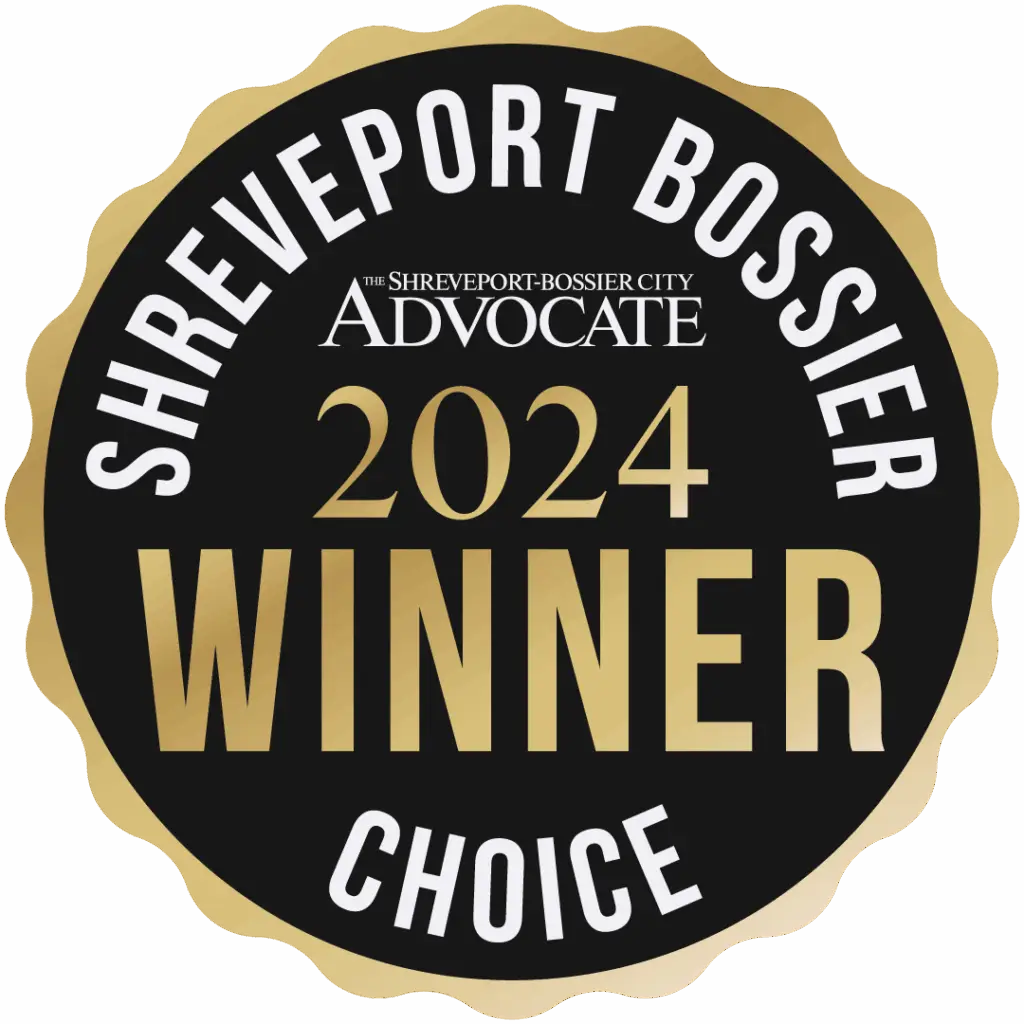Louisiana is famous for its celebrations of Carnival and Mardi Gras, extravagant social events brought over by the French in the late 17th century. From small towns to New Orleans, everybody goes all out with parties, parades, balls, and more. Read on for everything you need to know about this famous event lineup.
Timeline
The timeline for these festivities differs from town to town. However, the timeline begins on the Christian holiday of Epiphany and ends on Ash Wednesday. Towns all over Louisiana host parades and events throughout the season, coming to a head on the day of Mardi Gras. The festivities are organized around four major events.
Epiphany
Carnival season officially starts with Epiphany (or Three Kings Day) on January sixth. This is the twelfth night of Christmas (beginning on Christmas Day), and it remembers the kings from afar who brought gold, frankincense, and myrrh to the baby Jesus. Louisiana traditions usually involve king cake parties where participants hope to receive a slice of cake concealing a plastic baby Jesus.
Carnival
Carnival runs for two weeks up to the day of Mardi Gras, which ends the night before Lent begins. Krewes (social organizations) organize events starting with the Phunny Phorty Phellows streetcar parade. Parade traditions include throwing beads and other plastic things at the crowds who cheer them on and mark the time. The parades happen over a series of 12 days. Balls, feasts, street fairs, parties, and other lush events occur throughout the season.
Mardi Gras
Mardi Gras, or “Fat Tuesday,” is the culmination of Carnival. Participants eat, drink, and dance before the Lenten season begins. It always falls 47 days before Easter (in Louisiana) and has been a legal holiday since 1875. Revelers enjoy parades, balls, and other events steeped in unique traditions.
Ash Wednesday
Ash Wednesday is the start of the 40 days of Lent. During Lent, Christians participate in a period of sacrament where followers fast or give up certain luxuries in observance of the sacrifices made by Christ. Jesus’ crucifixion is observed on Good Friday and culminates on Easter Sunday when celebrations can begin again.
Mardi Gras in New Orleans
New Orleans is renowned worldwide for its Mardi Gras celebrations. Crowds stand or sit along the parade routes, enjoying the floats and catching the souvenirs the riders throw. Most of the parades are family-friendly, contrary to the reputation of the French Quarter parades, which host notoriously hedonistic revelry.
Parades
There are 78+ parades around the city, with the biggest – Rex and Zulu – happening on the first day of Mardi Gras. You can find a parade every weekend of the season and every day of the week of Carnival.
People wave, dance, and call out to get the attention of the krewes on the floats in hopes of catching mementos. Some particulars to each parade include:
- Rex tosses doubloons or pendants, marked by the corresponding krewe on one side and the parade’s theme on the other.
- Bacchus also has doubloons with the celebrity king on them.
- Zulu has its famous coconuts.
- Muses have hand-decorated shoes.
- Nyx decorates purses.
- Alla features genie lamps.
- Iris is an all-female krewe that throws highly coveted sunglasses.
Parade-goers go to extreme lengths to catch “throws,” including wearing colorful costumes and bringing nets. Pro tip: the magic words to catch every throw from the parade floats are “Throw me something, mister.” Muses shoes and Iris sunglasses are the most collectible swag.
The French Quarter and Bourbon Street
The French Quarter and Bourbon Street parades are the loudest, most crowded, and raucous. They don’t host larger parades or floats because they cannot fit in the small streets. If you want to experience the “real” Mardi Gras, attend some parades in other locations in the city. Most are family-friendly, and some even feature our furry friends.
The French Quarter and Bourbon Street are best known for tourist crowds that are drinking and partying hard. If that’s your scene, you can find drunken chaos there, no problem. But only until midnight when the police walk through and shut down the revelry.
Crime is rife in this area, especially pickpocketing. Local authorities recommend the following to keep safe in this area:
- Leave valuables at home
- Beware of pickpockets
- Watch your drinks or keep them covered
- Bring a paper map in case you lose your phone
- Don’t engage with scammers or leave your group
- Only use licensed taxis and double check your ride services
Overall New Orleans takes every measure to keep people safe. However, accidents happen. In the event of an accident, your first call after the hospital should be an attorney.
The Krewes
Krewes form based on neighborhoods, cultures, or common interests. The krewes design costumes, build floats, plan events, and throw mementos to the crowd. At the biggest parades, super floats with lights and special effects draw the most attention. Other floats are little more than large boxes to hold the krewe. Fun fact: float riders are obligated by law to wear face paint!
Krewes plan their costumes and float all year with a great deal of secrecy. Krewe themes usually change yearly and provide participants with a year-round hobby and group of friends.
The list of krewes is long and rich with history; a few major players include:
Krewe of Zulu
The Krewe of Zulu is the first all-Black krewe to march in major parades. It was formed by a labor group inspired by a musical comedy about the Zulu Tribe. They hold their parade in Uptown, New Orleans, on Mardi Gras. Anyone that catches their famous coconut can count themselves among Mardi Gras royalty.
While krewes may not set race as a membership criterion, some did as late as 1990. Some krewes continue to refuse the Black community from joining and are thus barred from the parades.
Krewe of Rex
The Krewe of Rex is a Mardi Gras centerpiece and has served as an example for many other krewes over the years, especially concerning the famous purple, and gold Mardi Gras is known for. The Rex Parade and Rex Ball are among the gaudiest and most excessive. They’ve been around since 1872, when the parades began to attract tourists and businesses to New Orleans after the Civil War. Their Rex (King) is an honored member of New Orleans society.
The group has been the source of occasional controversy due to its extremely exclusive membership.
Krewe of Bacchus
Bacchus was formed in 1968 and marches on Sunday. They have 1600 male members and 32 super floats. This crew is known for hosting celebrity guests and their Greek-god-inspired floats. They end at their convention center, where around 9,000 people attend their ball.
Krewe of Orpheus
Orpheus marches on Lundi Gras, the day before Mardi Gras. It’s a new crew centered around music and musicians formed in 1993 and is the first to allow male and female riders. Their krewe includes 700 male and female members. They throw doubloons and large stuffed dragons. Unlike most other krewes, you can buy a ticket to the Orpheus ball, the Orpheuscapade.
Krewe of Iris
Iris was formed in 1917 and is the oldest all-female krewe in New Orleans, paving the way for female participation in Carnival. They maintain a global membership of over 3400 members. Their parade begins on Napoleon Ave. and Carondelet St. in New Orleans.
Mardi Gras Indians
The Mardi Gras Indians are a more secretive krewe that doesn’t share their parade route ahead of time with those that aren’t in the know. Their members tend to hail from the inner city of New Orleans and communities that were historically prevented from Carnival celebrations due to racism and classism. Despite being less structured than other krewes, they’ve been marching in the parade for over 100 years. Their name pays tribute to the indigenous people that helped combat and escape slavery.
These krewes are some of the biggest and most famous, but many others put on fantastic parades, balls, suppers, and other events. These parades take place around the city: Metairie, Slidell, Midtown, Westbank, Marigny, and more.
Traditions
Beyond the parades, New Orleans hosts countless unique traditions during Carnival and Mardi Gras. These rich traditions make New Orleans’ Carnival unique, drawing visitors from around the world.
Flambeaux
“Flambeaux” comes from the French word “flambe” or flame. The first official Mardi Gras flambeaux debuted with the Mistick Krewe of Comus on Fat Tuesday in 1857. Before electricity was available, the flambeaux carried torches to allow party-goers to view the floats at night. Enslaved and free men of color (namely Creoles) carried torches for tips. Today, the flambeaux light up the night to pay homage to history (and get major tips).
Masks
The tradition of wearing masks at Carnival events came from a desire to mingle among different classes without harming one’s reputation. However, women were still often looked down upon for wearing masks. The masks serve the same purpose today, allowing revelers to enjoy themselves with a degree of anonymity. As mentioned earlier, masks or face paint is required for float riders.
French Quarter Balconies
The most desirable spot to watch the parades are from the balconies of the French Quarter. These historically rich overlooks, often framed in wrought iron, get decked out in green, gold, and purple for the festivities. Balcony spots tend to be where the wealth lies in the Bourbon Street bead economy.
Balconies typically sell out at least five years in advance to news organizations and wealthy corporations. However, Carnival and Mardi Gras strictly prohibit corporate sponsors. You’ll need to plan for these coveted spots to be above the raucous.
Mardi Gras Colors
People drape everything in purple, green, and gold during Mardi Gras. Purple represents justice. Green represents faith. Gold represents power. As mentioned above, the Krewe of Rex is responsible for the popularity of these specific colors, originally associating them with wealth and royalty.
Balls
Balls largely follow parades and are private, white- or black-tie events put on by each Krewe. They tend to be exclusive to krewe members and other VIPs. Krewes decorate their balls to the hilt and feature excellent food and live music for dancing. It’s a huge honor to get an invitation if you aren’t a krewe member. Most balls are private affairs that depict “tableaux” or staged pageants of proprietary history. They also serve to crown kings and queens and other high-ranking officials. Some balls are less formal and offer tickets to the public.
The Krewe of Endymion puts on the biggest ball in the Superdome. The Krewe of Orpheus hosts its ball at the Convention Center and sells tickets.
Food and Drink of Carnival and Mardi Gras
Traditionally, the bulk of food and drink at Mardi Gras includes Cajun, Creole, and French-inspired fare. You will find high-end restaurants and mom-and-pop staples serving up incredibly tasty delicacies.
Some food and drinks have a special tie to the Carnival season:
- Hurricanes are available all over New Orleans and are the most popular drink during Mardi Gras.
- Jambalaya was brought to New Orleans by Spanish settlers and is a comfort food staple in New Orleans and beyond.
- Po’Boys are delicious, meat-stuffed baguettes that date back to the 1930s.
- Crawfish boils bring communities together year-round in New Orleans. Just remember to pinch the tail and suck the head.
- Beignets were brought over with French colonists in the 18th century and remain a staple in homestyle Creole cooking.
King Cakes
The season of Carnival starts with Epiphany, the feast of the Three Kings. Epiphany or King Cake is a blend of coffee cake and cinnamon roll. It represents the three wise men’s gift to Christ on his birthday. You can find cakes filled with fruit and marzipan and topped with sugary creations.
Today they are often braided dough decorated with purple, gold, and green. A plastic baby is hidden somewhere in the cake, and its recipient must host the next party or at least bring the next cake.
Gumbo
Gumbo came from West Africa. Today’s gumbo, however, is a stew that melds African, Native American, and European traditions. Black people have traditionally made all gumbo with okra to thicken the stew. Okra is an African plant brought over by enslaved people. Later in its history, indigenous people gave file or ground sassafras as a seasoning and thickener. Today, people often make gumbo with European-style roux.
Gumbo is filled with meat and seafood. The base includes rice with onions, peppers, celery, okra, and other vegetables. Every gumbo recipe is different and unique to the history of that family. Gumbo crosses all barriers of class and race. Everybody eats gumbo.
Sazerac
The Sazerac became the official cocktail of New Orleans in 2008. It can be made with French cognac (brandy) or rye whiskey. The other ingredients are absinthe, bitters, and sugar. It is similar to an Old Fashioned with the hint of licorice flavor lent by the absinthe.
Not Just New Orleans
New Orleans may have the biggest Mardi Gras and Carnival Season, but many towns around Louisiana host parades and parties worth bragging about, including:
Shreveport
Up in Shreveport, they host several parades. The Krewe of Barkus and Meoux put on an Animal Parade. It features pets and other animals brought in for people to enjoy. Expect pigs, turtles, and lots of happy dogs.
Alexandria
Alexandria hosts a variety of parades. The best-known is the Pineville Light the Night Parade, which crosses the bridge from neighboring Pineville
Woodworth
Woodworth hosts The Hixson Classic Cars and College Cheerleaders Parade. If your car isn’t a classic, do not worry. They also welcome tractors, go-karts, horses, and other moving things.
Monroe
Monroe has two parades. The Krewe de Rivière rolls two parades on one Saturday, and the Krewe of Janus sends out three on the next. The first parades are for children (and pets).
Baton Rouge
In Baton Rouge, the fun starts with the theft of pink yard flamingos. After that, you can enjoy the eight parades, food, and other traditions. Their parades are famous for their family-friendly atmosphere. Nearby towns also have parades and events worth checking out.
Lafayette
Lafayette is one of the communities that host the Courir De Mardi Gras (along with Houma, New Iberia, and others). Courir De Mardi Gras is Louisiana French for “Fat Tuesday Run.” It involves foot and horse races with costumed participants. In some areas, runners stop at people’s homes to get ingredients for gumbo.
Lafayette also has regular parades with a twist. They all end up at Cajun Field, where they have a carnival with rides, music, and games.
Have Fun and Stay Safe
Whether you are a local or a tourist, Carnival and Mardi Gras are unique events in Louisiana. If you want to know where and when events are happening, get a print copy of Arthur Hardy’s Mardi Gras Guide or other guides online. Remember that accidents happen no matter how much you plan or how vigilant you are. If you were injured in an accident during Carnival or Mardi Gras, contact an experienced attorney for advice, so you can have your king’s cake and eat it too.
Mardi Gras dates
2023 – Feb. 21
2024 – Feb. 13
2025 – Mar. 4
2026 – Feb. 17
2027 – Feb. 9
2028 – Feb. 29
2029 – Feb.13
2030 – Mar. 5
2031 – Feb. 25
2032 – Feb. 10
2033 – Mar. 1
2034 – Feb. 21
Works Referenced
Arthur Hardy. (Dec. 27, 2022). Mardi Gras Guide. http://www.mardigrasguide.com/
Greenspan, Jesse. (Feb. 28,2022). 9 Things You May Not Know About Mardi Gras. The History Channel. https://www.history.com/news/9-things-you-may-not-know-about-mardi-gras
LouisianaTravel.com Staff. 10 Things You Might Not Know About Mardi Gras. LouisianaTravel.com. https://www.louisianatravel.com/articles/10-things-you-might-not-know-about-mardi-gras
LouisianaTravel.com Staff. How Louisiana At Large Does Mardi Gras. LouisianaTravel.com. https://www.louisianatravel.com/articles/how-louisiana-large-does-mardi-gras
MardiGrasNewOrleans.com.2023. https://www.mardigrasneworleans.com/
Pruitt, Sara. (Sept. 1, 2018). From King Cake to Zulu Coconuts: The History of 6 Mardi Gras Traditions. The History Channel. https://www.history.com/news/from-king-cake-to-zulu-coconuts-the-history-of-6-mardi-gras-traditions.










